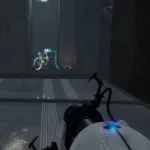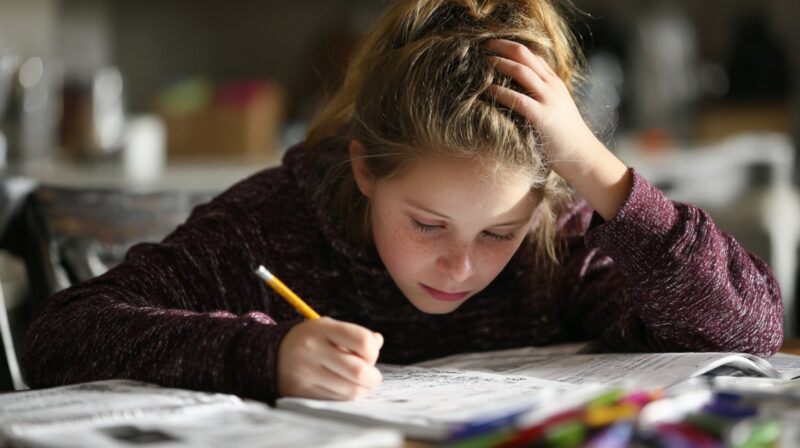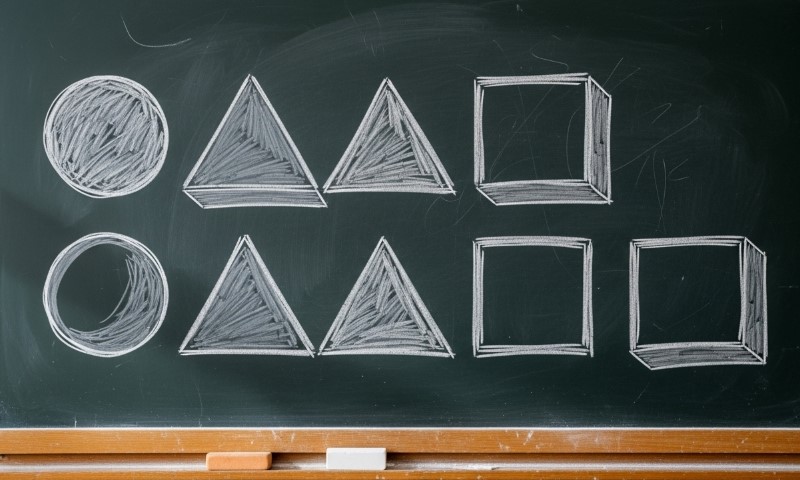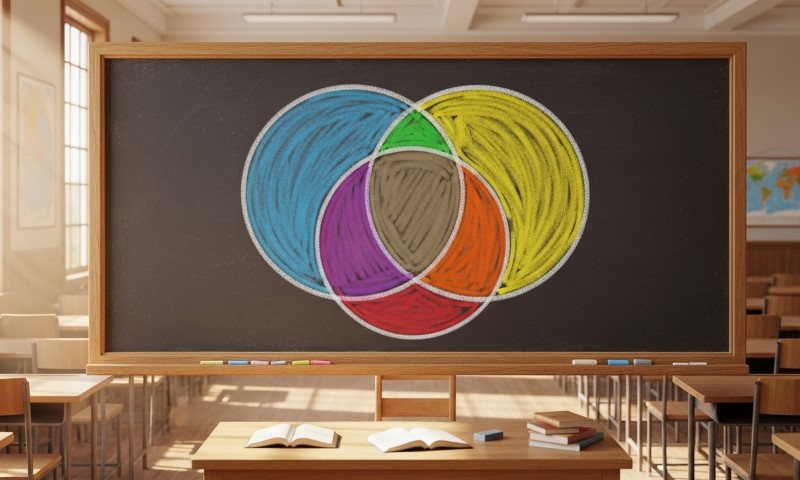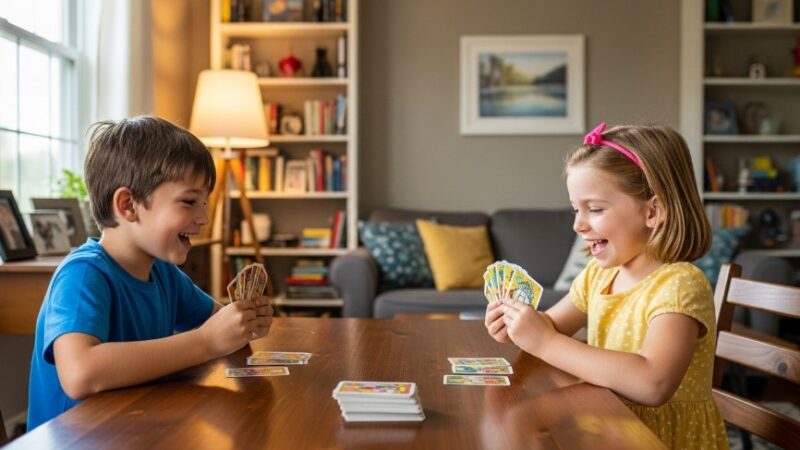
Share Post:
You do not need expensive math workbooks or digital apps to help kids (or even adults) strengthen math skills. A simple deck of cards is enough to create dozens of engaging math games that improve addition, subtraction, multiplication, fractions, and problem-solving. The concrete answer is this: math card games are one of the easiest, cheapest, and most effective ways to practice math at home while making it feel like play. They are flexible, you can adapt them to any age or skill level, and they build not only calculation speed but also strategy and critical thinking.
Parents often struggle to find activities that feel fun yet still educational. Worksheets may lead to frustration, and screen-based tools can be limiting or distracting. Card games, by contrast, combine hands-on play, family interaction, and quick feedback. Most importantly, they use a familiar object, a playing card, so children approach the activity with curiosity instead of resistance.
Table of Contents
Toggle1. Addition War
In addition, War is a perfect starting game for younger children who are learning basic addition.
Each player flips over two cards at once and quickly adds them together. Whoever has the higher sum collects all four cards. The game continues until one player has all the cards, or you can set a timer and count who has the most at the end.
Why it works: The repetitive nature of the game reinforces number bonds and helps children move from finger counting to mental calculation. Because it’s competitive, kids stay motivated to answer quickly.
| Feature | Details |
| Best Age Group | 5–8 years old |
| Math Skill | Addition fluency, comparing numbers |
| Variation | Use subtraction or multiplication instead |
2. Make Ten
This game builds strong number sense by encouraging kids to find pairs of numbers that add up to ten.
Lay out twelve cards face up. Players take turns finding pairs (o,r in advanced play, triples) that equal ten. Whenever a match is found, the player collects the car, and new ones are placed. The game ends when no more matches can be made.
Why it works: Recognizing number pairs that total ten is a foundational math skill. It also encourages children to scan multiple options and think strategically, rather than just focusing on the first numbers they see.
| Feature | Details |
| Best Age Group | 6–10 years old |
| Math Skill | Addition facts, number bonds |
| VariatioThe target | get sum can be 15 or 20 for older children |
3. Multiplication War
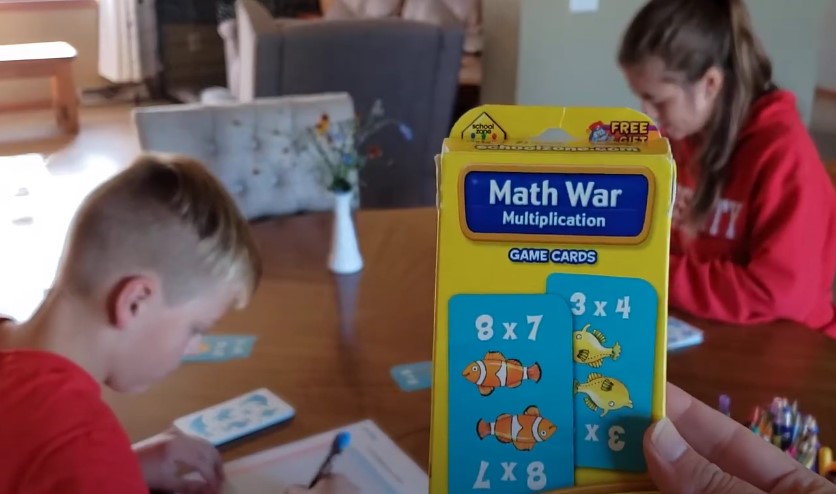
For children ready to move beyond addition, Multiplication War is the natural next step.
Each player flips over two cards, multiplies them, and announces the product. The player with the higher product wins that round. If players tie, they flip again until the tie is broken.
Why it works: Kids practice multiplication facts in a high-energy setting, which improves speed and confidence. Over time, they begin recognizing patterns (like anything multiplied by 10 or 11) without effort.
| Feature | Details |
| Best Age Group | 7–11 years old |
| Math Skill | Multiplication fluency |
| Variation | Allow calculators for beginners to focus on comparison |
4. Place Value Race
This game introduces an essential concept: how the position of digits changes the value of a number.
Players decide on a digit length (for example, three-digit numbers). Each draws that many cards and arranges them to create the largest possible number. The player with the bigger number wins. For a twist, you can aim for the smallest number instead.
Why it works: Children get hands-on experience with place value, which is critical for understanding larger numbers and later concepts like decimals.
| Feature | Details |
| Best Age Group | 6–12 years old |
| Math Skill | Place value, number comparison |
| Variation | Introduce decimals or fractions for older learners |
5. Fraction Match
@playfullearninggames Fraction Match! #fractions #fractiongame #mathsgame #primarymaths #learningthroughplay
Fractions can feel intimidating, but this game makes them tangible.
Assign black suits as numerators and red suits as denominators. Each player draws one black and one red card to form a fraction (e.g., 7/9). Players compare fractions to see whose is larger.
Why it works: Children practice comparing fractions visually and conceptually, instead of memorizing rules. It also opens opportunities to simplify fractions and discuss why some are bigger even if they look smaller.
| Feature | Details |
| Best Age Group | 8–13 years old |
| Math Skill | Fraction sense, comparison, simplification |
| Variation | Add fractions together for advanced play |
6. Math Memory
Memory is a familiar game, but adding math facts transforms it into practice.
Write math problems (like 6 × 7) on one set of cards and their answers (42) on another. Place them face down and play like a traditional memory game.
Why it works: Kids get repeated exposure to math facts and immediate feedback when they make a match. The memory element adds a second layer of challenge, boosting focus and recall.
| Feature | Details |
| Best Age Group | 5–10 years old |
| Math Skill | Multiplication, addition, and subtraction facts |
| Variation | Use missing number problems (e.g., 9 – ? = 4) |
7. Equation Build (The 24 Game Style)
This is the most challenging of the card games and works well for older children or family play.
Each player draws five cards and must use them with basic operations (+, –, ×, ÷) to create an equation that equals a target number (often 24). If they succeed, they score a point.
Why it works: It requires creative thinking, flexible use of numbers, and understanding of the order of operations. Players learn that there’s often more than one correct solution, which builds persistence and resilience.
| Feature | Details |
| Best Age Group | 9+ years old |
| Math Skill | Problem-solving, order of operations |
| Variation | Rotate target numbers each round |
8. Target Number Challenge
This game introduces flexible thinking and multiple operations.
To play, select a “target number” at the start of the round (for example, 50). Each player draws four cards. Using addition, subtraction, multiplication, and division, players try to combine their numbers to reach the target exactly. If no one can hit the target, the closest result wins the round.
Why it works: Instead of rote memorization, children learn to manipulate numbers creatively. It strengthens problem-solving skills and teaches that there are often many possible paths to a solution.
| Feature | Details |
| Best Age Group | 9+ years old |
| Math Skill | Multi-step problem solving, operations |
| Variation | Use larger targets for teens or adults |
9. Odd or Even Sort
This is a fast-paced game for younger learners that builds early number sense.
Shuffle the deck and place it in the center. Players take turns flipping a card and calling out whether it is odd or even. If correct, they keep the card; if wrong, it goes to the bottom of the deck. The winner is the player with the most cards after the deck runs out.
Why it works: Recognizing odd and even numbers helps children later with divisibility rules and multiplication patterns. The quick pace keeps them alert and reinforces the concept without worksheets.
| Feature | Details |
| Best Age Group | 5–8 years old |
| Math Skill | Odd/even recognition, number sense |
| Variation | Add a scoring twist: odd cards = 1 point, even cards = 2 points |
10. Math Rummy
@1minuteboardgames Take rummy in new directions! Ty @Asmodee North America, Inc. for sponsoring this tutorial ✨Learn to play SETUP✨ 👥 2-4 players ⏰ 20 min playtime 🚼 Ages 8+ #boardgames #GameNight #boardgame #rummy #rummikub #familygamenight #familygames #games #gaming #partygames
This game combines the fun of classic rummy with arithmetic practice.
Each player is dealt seven cards. Instead of matching by suit or sequence, players form sets that satisfy math equations. For example, a player could lay down a set of 6, 7, and 13 to show 6 + 7 = 13. Another set might be 8, 2, and 16 for 8 × 2 = 16. Players continue drawing and discarding until someone goes out.
Why it works: Children practice multiple operations while planning their moves strategically. It blends the creativity of card strategy with the discipline of math facts.
| Feature | Details |
| Best Age Group | 8–14 years old |
| Math Skill | Addition, multiplication, equation building |
| Variation | Advanced play can include subtraction, division, or even exponents |
Final Thoughts
Math card games transform what might otherwise feel like practice into an activity that kids look forward to. The key advantage is flexibility: you can adjust the rules, target numbers, or operations depending on the child’s age and skill level. Younger children may focus on addition and number bonds, while older children can challenge themselves with fractions and algebra-style reasoning.
The concrete answer remains the same: with just a deck of cards, you can turn math into a daily family activity that strengthens critical skills, builds confidence, and makes learning feel like play.
Related Posts:
- High-Paying Jobs You Can Get with a Math Degree in 2025
- Top 40 Cooperative Board Games You’ll Love Playing Together
- How can I make my 3rd-grade math fun? From Bored to Board!
- Top 5 Ways Adults Can Brush Up on Core Math Skills in 2025
- How Community Donations Can Improve Learning Conditions?
- Can Early Nutrition Affect Mental Development?




